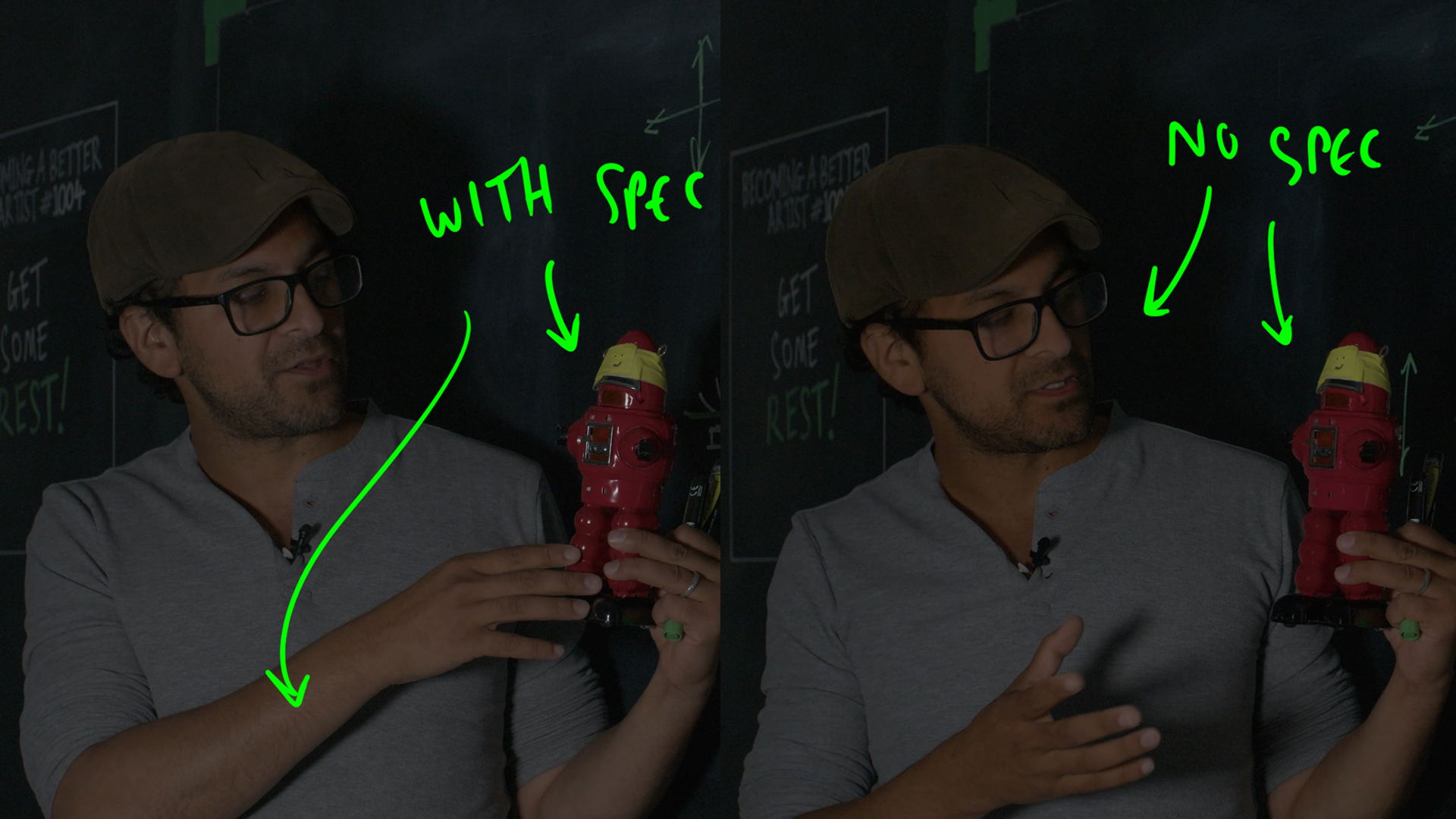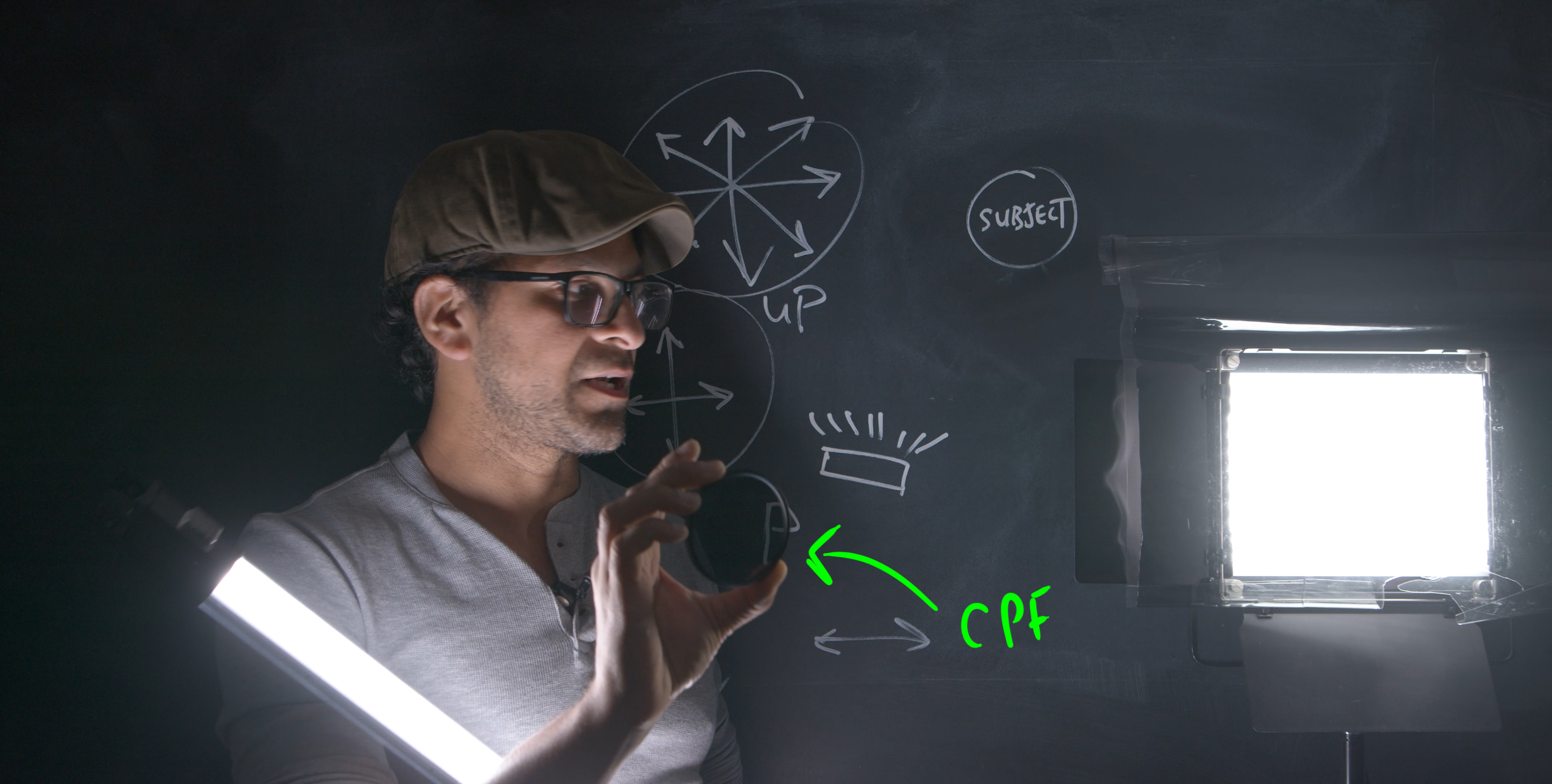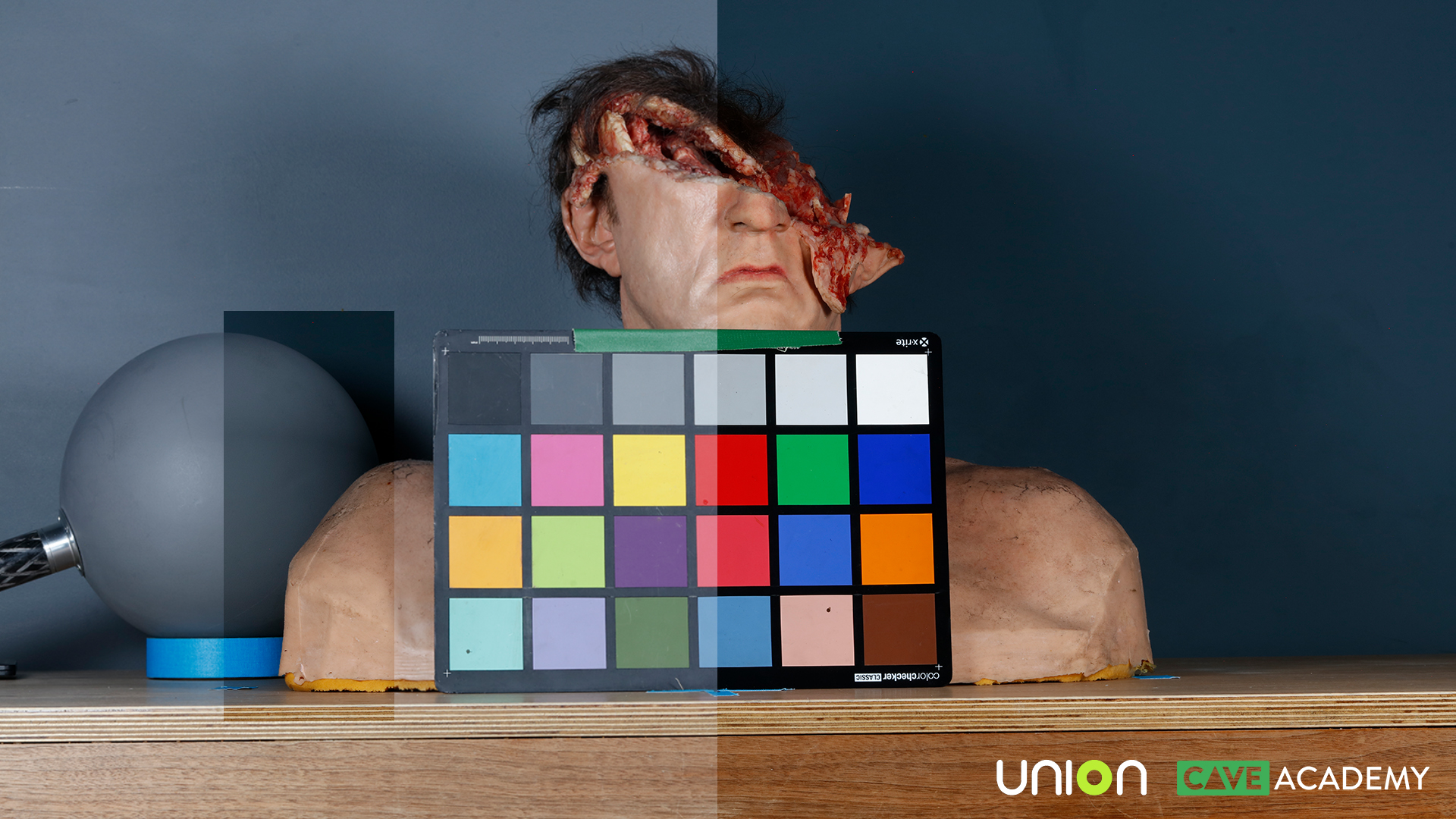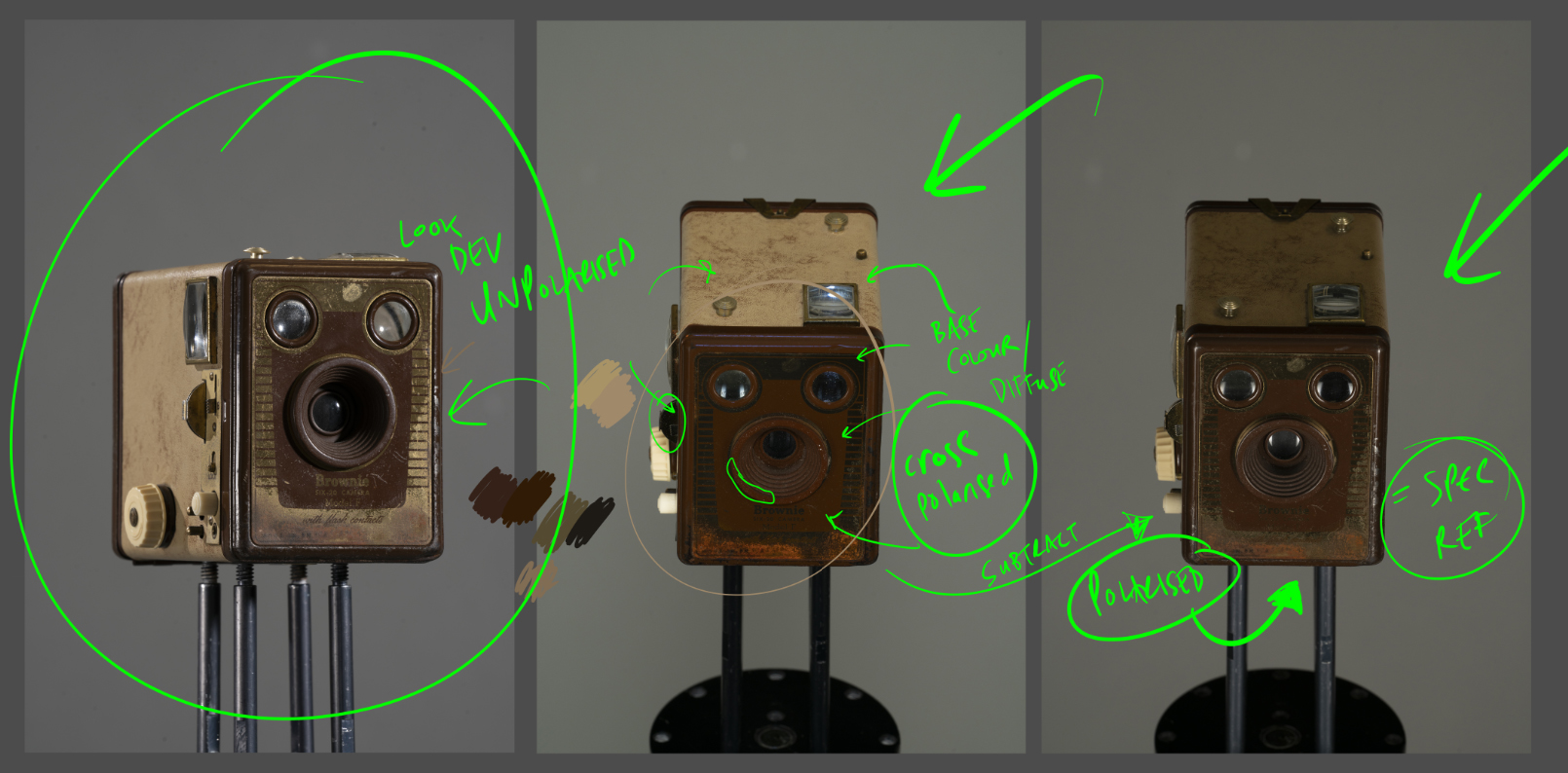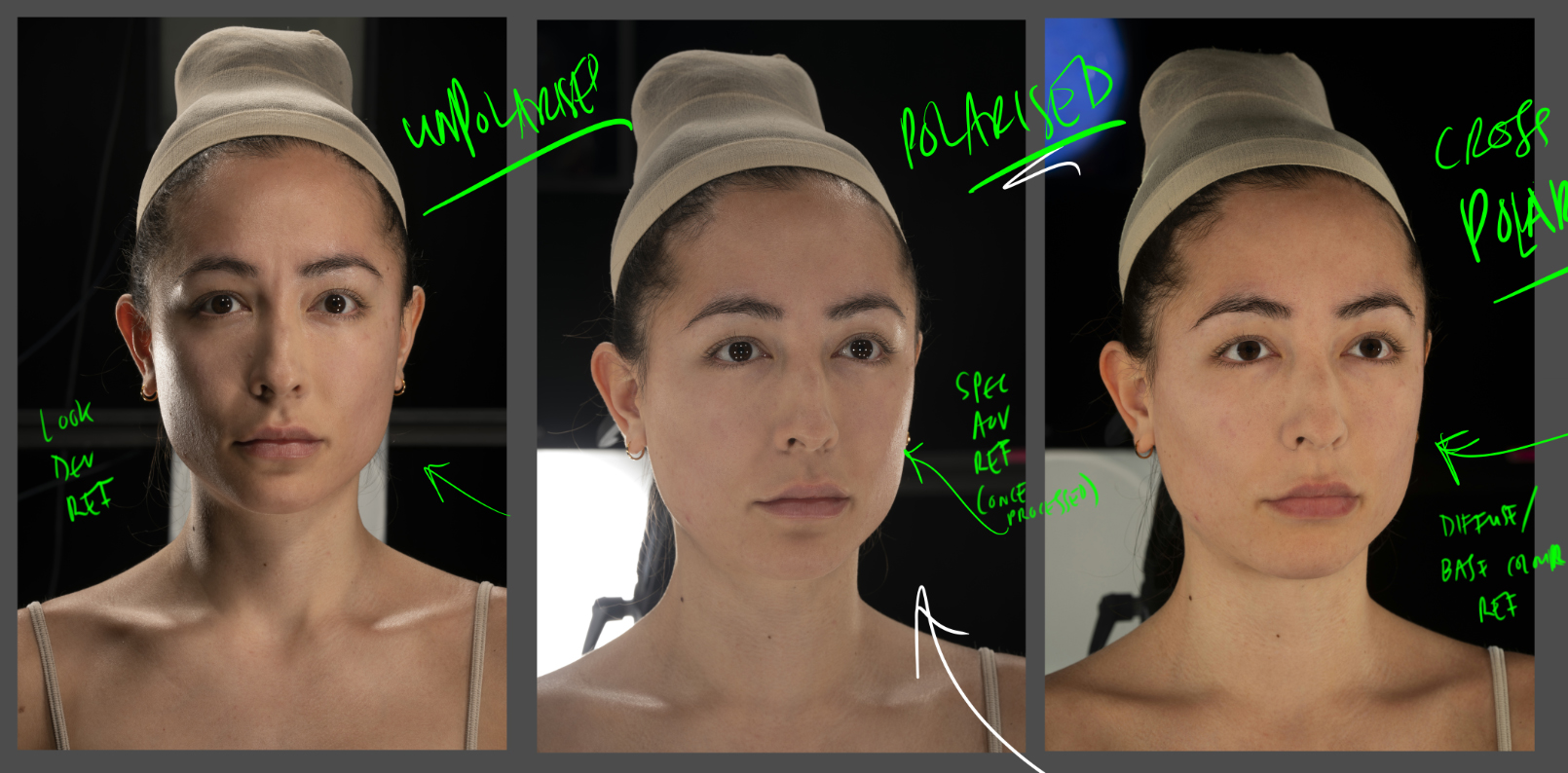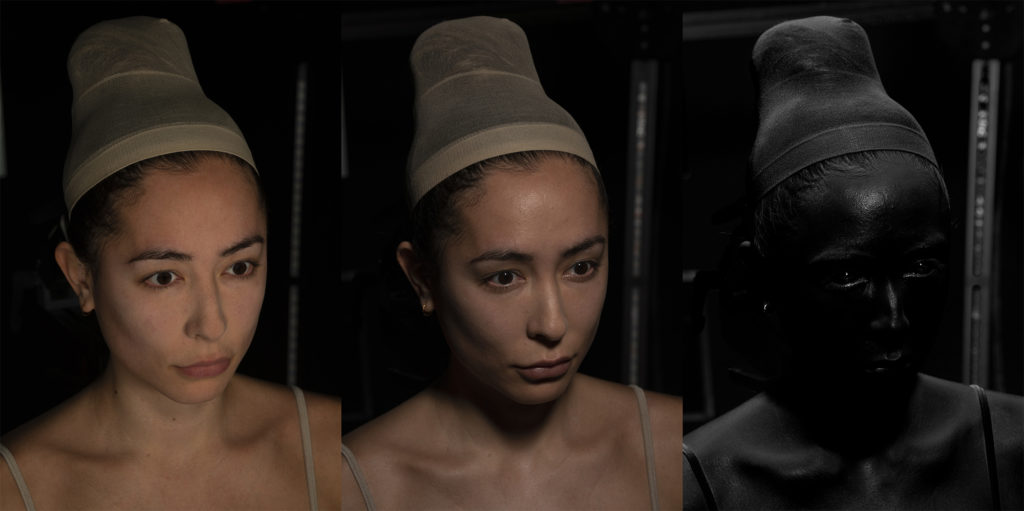Search the wiki
Unpolarised, Polarised and Cross Polarised Photography
Introduction
Before we dive in, I just want to give a huge shout out to our collaborative partner, Clear Angle Studios, for supporting CAVE Academy and allowing us to capture high-quality datasets, and share the results on our Wiki.
In this document, we’ll dive into how we can control light in order to support us in the capture of texture and look development reference. And just a quick note, I am not a scientist (although a big, big fan of science), therefore, if I use the wrong terminology, feel free to let me know and I can make the corrections as required 😉
This will not be an in-depth walkthrough of setting up a look dev and texture shoot, but below, you’ll be able to watch a short timelapse video of how I go about setting up a shoot (although this is generally configured depending on the type of asset I am shooting).
For more information on shooting reference for texturing and look development, you can check out this course here:
So back to the topic. Let’s kick things off with exploring unpolarised light.
Unpolarised Light
We should already know at this stage that a light wave is an electromagnetic wave. For a deeper breakdown of light, make sure to check out this page:
Unpolarised light is a light wave that vibrates in a variety of directions. For simplification, let’s say it vibrates in a vertical and horizontal plane. Examples of unpolarised light include light emitted from the sun, a candle, a lightbulb or an LED panel.
For look development, shooting reference with unpolarised light is a good idea as on most occasions, that’s how we’ll be seeing the assets in real-life. Therefore, when shooting look development reference, you should shoot with no polarising filters are on the lights and no cross polarising filter is on the lens. Don’t forget to shoot the Macbeth chart reference, so you have a ground truth of how colour is captured with your selected camera, and from which you’ll be able to grade and expose your images later on.
Do note, however, that some sources will emit polarised light, for example, the light from your computer screen will more than likely emit polarised light.
Here is an example shot at Clear Angle Studios using unpolarised light.
Polarised Light
The process of restricting the light wave to a single direction is referred to as polarisation.
There are many ways in which unpolarised light can be polarised. For example, through reflection, refraction and scattering but for now, we’ll stick to using a filter.
We can transform unpolarised light into polarised light by using a polarising filter that sits in front of the emitting light, or by fitting a circular polarising filter on the lens. The chemical composition of the filter can restrict the vibrations of the electromagnetic wave to a single plane (either vertical or horizontal). By restricting one half of the vibrations, we’ll also be reducing one-half of the intensity of the light, so we’ll need to factor this in when shooting reference. Again, this is where the Macbeth chart comes in, so make sure to shoot it under polarised light.
When the light wave hits a surface, the reflected component will still maintain its polarisation. However, the diffuse component will be unpolarised. This is a good thing as it will allow us to have reference of the specular side of things, but by polarising just the lights, we are not getting reference of the diffuse only. To do this, we’ll need to look at cross-polarisation.
Cross Polarised Light
Cross polarisation is the process of polarising the incident light and the reflected light using two polarisers with perpendicular orientation. By doing this, we can effectively remove the specular reflectance and be left with just the diffuse component.
Shooting under cross-polarised light is extremely useful for texture artist and a fantastic way to gain a truer reference of the surface colour and the type of material itself. For metallic materials for example, we’ll just be left with black as true metals do not have any diffuse colour. So not only is it a great way to find the diffuse colour of non-metals but also a great way of figuring out what is a metallic object and what is non-metal.
To capture cross-polarised shots, we’ll need to cover all the light sources with linear polarising filters. If you are using multiple lights, the polarising filter must be going in the same direction (for example, vertical). You DO NOT want one light to have a filter running horizontally and another light to have a filter running vertically. If you then apply a circular polarising filter (CPF) onto your camera lens, and then rotate the CPF to be perpendicular (in this example, horizontal) to the light filters, you should then be able to remove all the highlights and the glare, and be left with wondrous colour. Easy peasy.
Do note, however, that by using filters on the lights and the lens, you’ll be reducing the amount of light transmission. Therefore, you’ll want to double-check your exposure as you shoot and make sure to shoot the Macbeth chart for each of the setups (unpolarised, polarised and cross-polarised). This will allow you to grade and expose your images later on.
Circular polarising filters (CPF) are made of special materials that are able to block one of the two planes of vibrations depending on how you rotate the filter. Do note, however, that by using a CPF, you will be reducing the amount of light transmission, and therefore, you will need to shoot a Macbeth chart with and without the CPF. This will allow you to properly grade your cross-polarised images later on for texture projection.
When done correctly, cross-polarised light can strip out all the reflection and the result can then be graded, projected, cleaned up, and then plugged into the ‘base_colour’ or ‘diffuse’ component of your shader, resulting in a more physically accurate result.
Take any object and shoot under cross-polarised light and you’ll see that it is probably darker than you expected it to be, and you might even spot a slight shift in hue and saturation. So, as you explore materials in the real-world, do observe and think about how the colour might not quite be what you think it is.
Here is an example shot at Clear Angle Studios using cross polarised light.
Comparing the Results and Using them in Post
Here we will look at how the captured data can be used in post.
The cross-polarised and polarised images will need to line up perfectly in order to subtract the specular component (which can then be used as visual reference to compare against the specular AOV).
So that means the lights and the camera should not move between the images. Because of my shoot setup, removing the polarising filters from the lights usually results in some movement to the lights themselves, so the last thing I’ll shoot is the actual look dev (unpolarised) reference. I don’t mind if the look dev images are not perfectly aligned to the cross-polarised/polarised images. If you can, ideally you would have a separate set of lights that are polarised and unpolarised, and you would fire off the specific lights for the specific shot.
Please note that these images have not been neutral graded or exposed and are for education purposes only.
Here is an example shot at Clear Angle Studios using cross polarised light, (left) polarised light (middle), and what happens when we subtract one from the other, which reveals the spec (of which I have desaturated).
And here is an example of a prop shot under cross polarised and polarised light, and then the subtraction (and desaturation) process.
So hopefully at this stage you can see the benefits from shooting assets under UNPOLARISED (look dev), POLARISED (spec ref) and CROSS POLARISED (diffuse ref) light. If you have any thoughts or other ideas, it would be great to hear from you.
Shooting Texture and Look Development Reference Course
If you are looking for a more detailed step-by-step breakdown, you can check out our course on the topic here:
Resources
- Light Collab – A guide on shooting cross-polarisation photography for textures. Still one of my favourite web pages, ever!
- Edmund Optics Introduction to Polarisation – A fantastic document on polarisation.
- The Physics Classroom: Polarisation – In in-depth breakdown of unpolarised, polarised and cross polarised light.
- CHSOS Polarised Light Photography – Here they demonstrate using polarisation techniques to shoot works of art and archeology.
Support CAVE Academy
Here at CAVE Academy the beauty of giving and sharing is very close to our hearts. With that spirit, we gladly provide Masterclasses, Dailies, the Wiki, and many high-quality assets free of charge. To enable the team to create and release more free content, you can support us here: Support CAVE Academy

